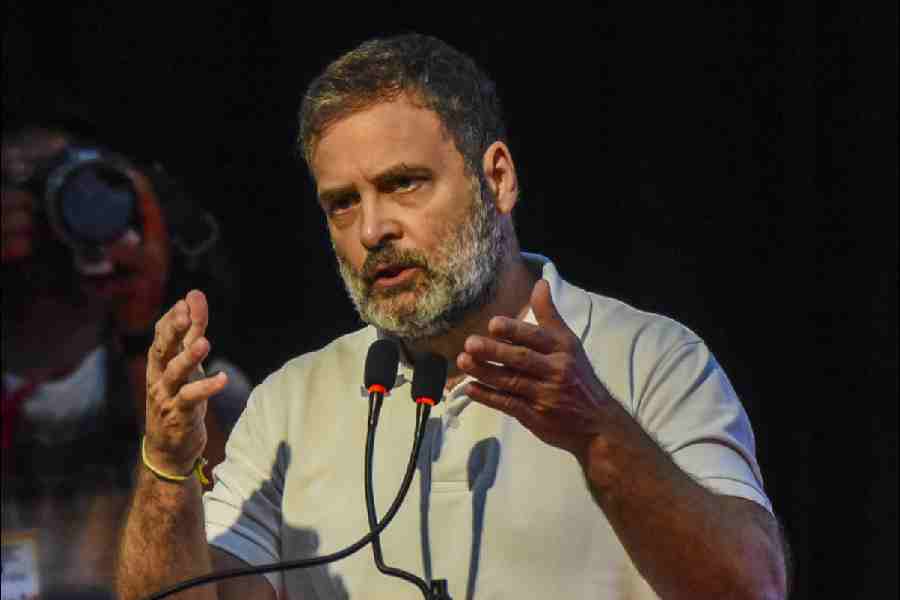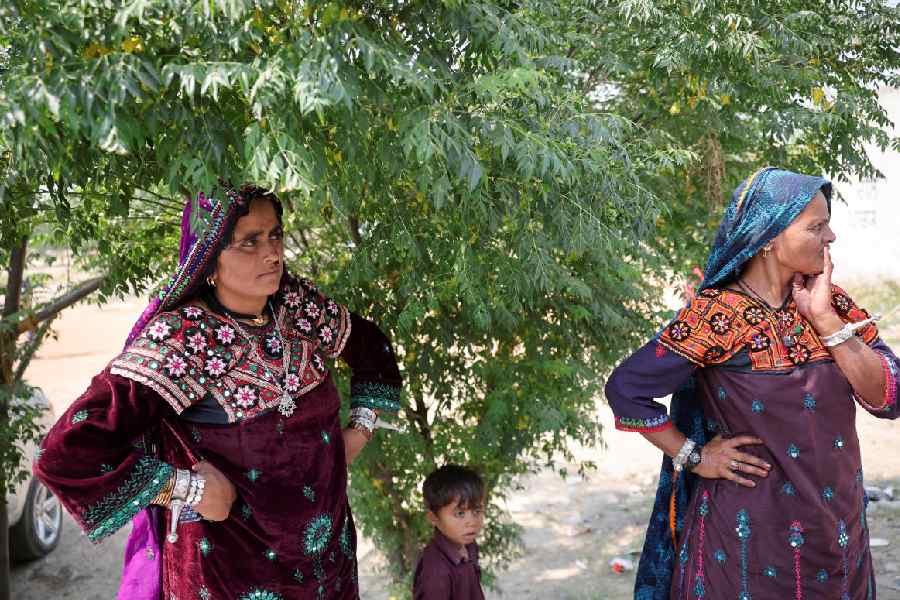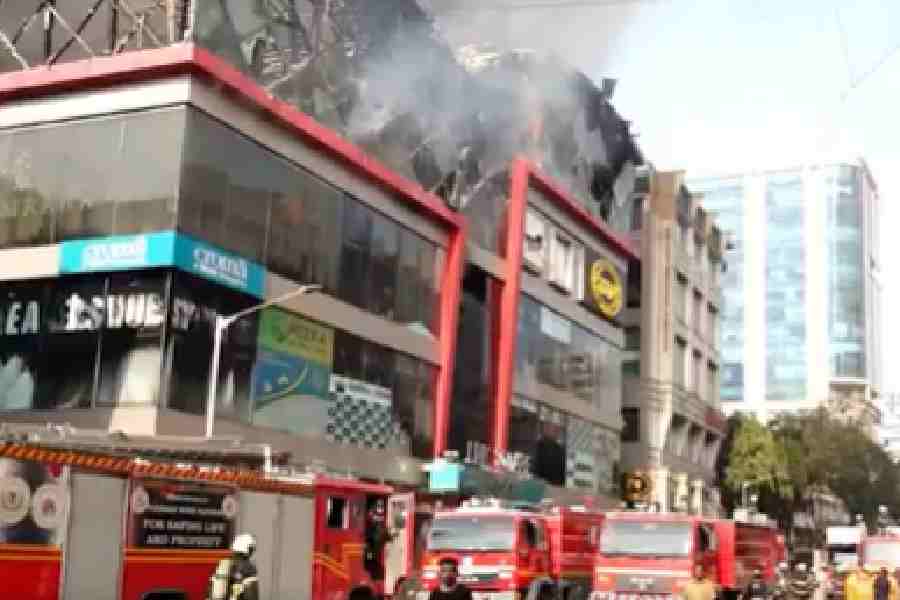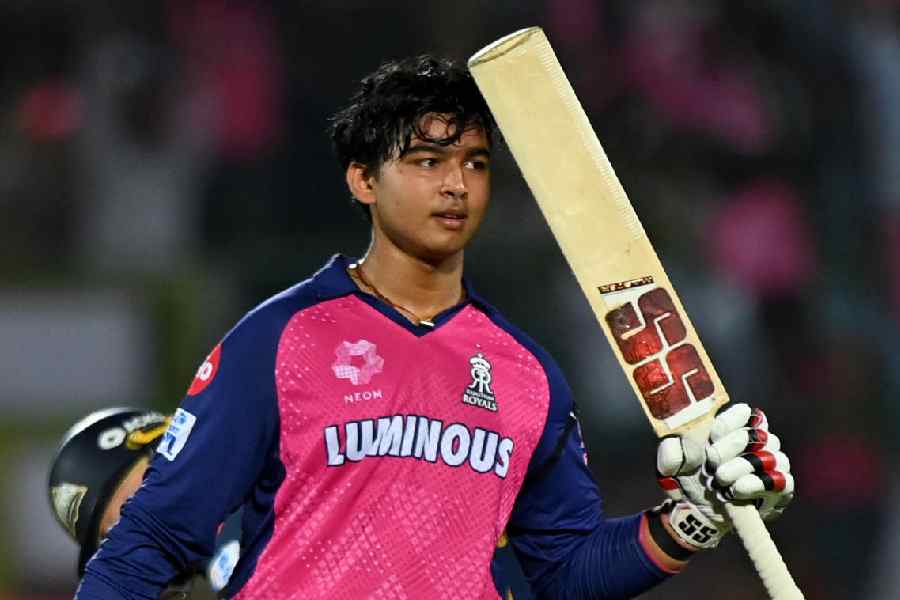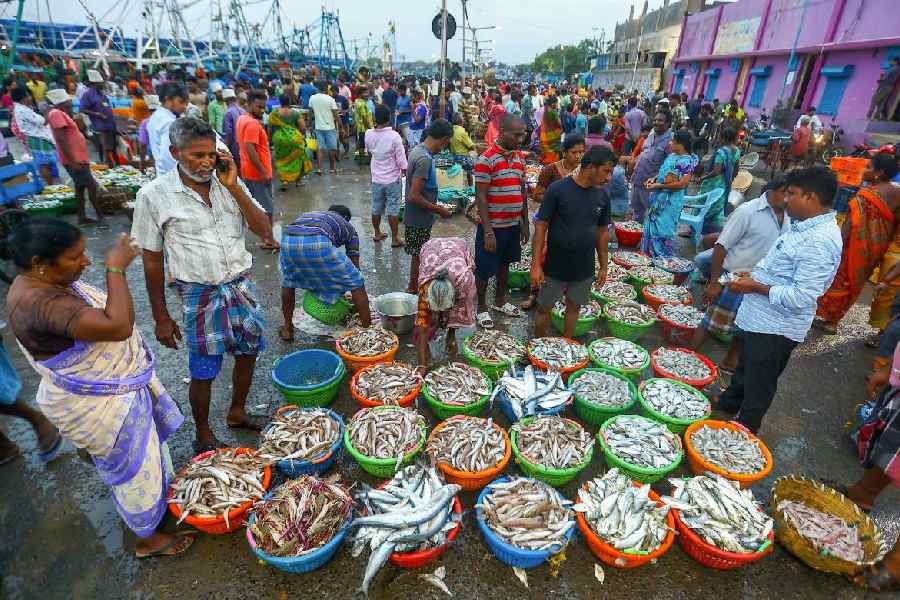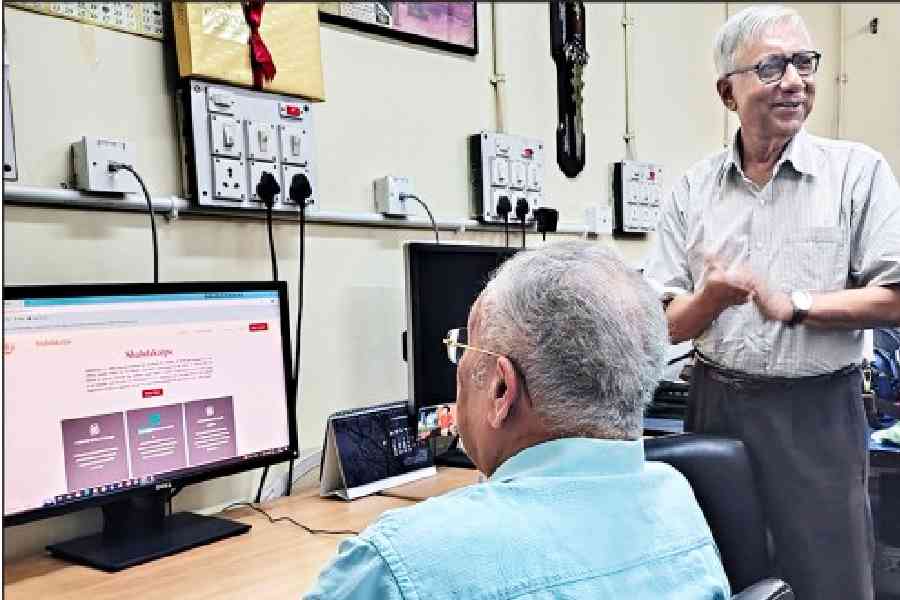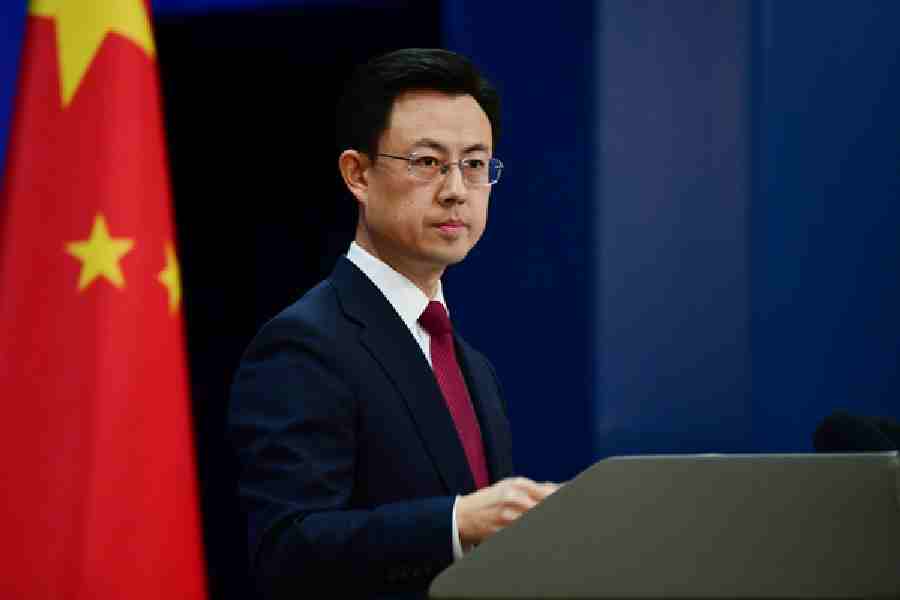
Bhubaneswar, Nov. 16: Money vending kiosks of major banks in the city had their shutters down for much of the day today, too, because of the cash crunch that continues a week after the demonetisation move was announced.
The few ATMs that were open today had long queues outside them.
"I came all the way from Jatni to withdraw cash as many of the ATMs in my area had run dry. However, the situation in the state capital is even worse. Since most of the ATMs belonging to my bank are closed, I had to queue up at another bank's ATM for half-an-hour to withdraw cash," said Narayan Mohanty, a businessman from Jatni.
Another customer Jayanta Patra said he ran out of cash last night and had a trying time withdrawing cash today. "Last night, I ran from one ATM to another and found no money at all. I woke up early this morning and chased a money carrying van of my bank. As it stopped and filled the cash at the ATM, I finally was able to withdraw cash," said Patra, a resident of VSS Nagar.
While citizens continued to queue up at bank and post office counters for exchange of the demonetised currency, closed ATMs added to their woes. "People are still in panic as the ATMs are going dry within an hour of opening. Our officials continue to fill the cash according to the directions of the government," said Akash Mishra, a corporate bank employee.
Moreover, fights at ATM counters have become frequent, as panic stricken people have been jumping queues at places. "People are going crazy. I was in queue at one ATM when one person tried to go ahead of others. When I protested he argued with me with others remaining mute spectators. At last, I left the place without drawing any cash," said Tutu Baliarsingh, a resident of Rasulgarh.
State Bank of India has 206 ATMs in the state out of which 38 are in Khurda, which includes Bhubaneswar. There is no approximate data on how many ATMs ran out of cash today. However, according to rough estimates, nearly half of the ATMs in the city ran out of cash by noon today.
The RBI had urged the "public to exercise patience and exchange notes at convenience any time before December 30", assuring the customers "there is enough cash available in the banks".
That was on November 11. However, the apex bank had added: "It may take a while for the banks to recalibrate their ATMs."


How does cash reach an ATM?
The RBI places orders for bank notes with two printers on the basis of an economic model that factors in real GDP growth rate, inflation and the denomination-wise disposal rate of soiled notes. Once printed, the notes are sent to the 19 issue offices, including one in Bhubaneswar, meant for the whole of Odisha.
From the issue offices, the notes are sent to 4,075 RBI-designated currency chest branches of a group of banks. Odisha has some 121 designated currency chest branches, which supply the notes to smaller branches and ATMs.
How did demonetisation affect this hub-and-spoke operation?
The demonetisation, announced on November 8, caused a surge in the demand for Rs 100 notes from the chest branches, which used to keep a bigger stack of Rs 500 notes. The chest branches then received the new Rs 2,000 notes.
General manager of Reserve Bank of India, Bhubaneswar, Sarada Prasanna Mohanty today said new Rs 500 notes arrived in the city this evening. By tomorrow, the chest branches will receive the new Rs 500 notes, he said, and the new notes would reach the banks tomorrow.
However, the new Rs 2,000 and Rs 500 notes can be distributed only over the counter, not through ATMs, which can now only dispense Rs 100 and Rs 50 notes.
Then why not stock ATMs also with Rs 2,000 notes and Rs 500 notes?
There's a catch. The new notes cannot simply be loaded into the ATMs. The configurations of the cassette (the tray that holds the cash) need to be changed. This is what the RBI meant by "recalibration".
The cassette needs to be recalibrated because the size of the Rs 2,000 note is different from that of the others. For instance, if the old Rs 500 note was 167mm long and 73mm wide, the new Rs 500 note is 150mm long and 66mm wide. Similarly, the old Rs 1,000 note was 177mm x 73mm while the new Rs 2,000 note is 166mm x 66mm. Recalibration requires technicians who have to open up each machine and make the change.
Ashok Shankar, solutions marketing and deployment manager at NCR India, one of the world's largest ATM makers, said the machines were universal and could dispense a wide variety of currencies like the Euro, the dollar and the rupee.
"Each ATM consists of either two or four cassettes, depending on the demand for currency where the machine is located. Now, a couple of changes are needed in the ATMs. The new notes are smaller and, therefore, the cassettes should be reconfigured," Shankar said.
"Second, some back-end changes are required to facilitate the dispensing of Rs 2,000 notes. Work on both is happening as we speak. It will take some time to cover all the ATMs."
Why is cash running out so fast in the ATMs?
Pure math. Earlier, the ATMs could pack more value with fewer notes.
ATMs typically store notes valued at Rs 8-9 lakh in denominations of Rs 100, Rs 500 and Rs 1,000. Following the demonetisation, the RBI had instructed banks to fill only Rs 100 and Rs 50 notes initially. This means the number of notes per transaction is higher and the ATMs are running out of cash faster even with a limit of Rs 2,500 per card a day.
Bank sources said that there is a cash crunch as people continue to withdraw the available Rs 100 from ATMs rapidly and depositing less, hence the rotation of the money is not fluid and many ATMs are running out of cash as soon as they are filled.
When will matters improve?
The RBI has said, "it will take a while". Bank officials in Bubaneswar said the ATMs would be recalibrated to dispense the new Rs 500 and Rs 2,000 notes probably from November 20.


